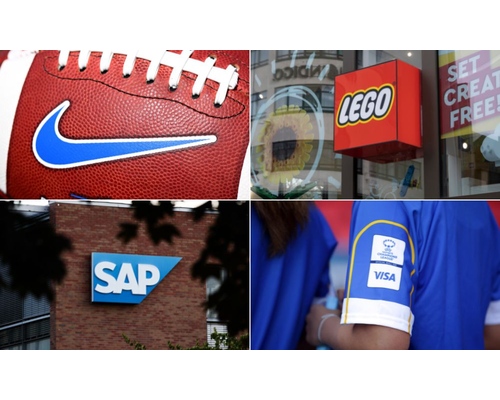Sports Advertising: Importance, Relevance, and Insight
Quality sports advertising is all about delivering a harmonious blend of entertainment, commerce, and culture in today’s world of speed and loyalty. The emergence of this particular marketing niche is evident, especially in the sports industry, which is continuously flourishing globally. Sports advertising is a fact that has managed to remain above the bar of tradition while attracting fans keenly supporting their preferred teams and athletes, making it a metallic platform where brands can hit the iron when it is hot. The current conditions, such as the pandemic’s impact on live events, the rise of digital platforms, evolving consumer, and an understanding of sports advertising, have made it relevant and a must for brand behaviours interested in their outreach and engagement. This article will get to the rock bottom of sports advertising, explaining to the audience how it controls a brand’s story. The discussion will even touch on brand methods to recognise what works, the types of advertisements that bring brands closeness to the athlete’s targets, and the susceptibility due to the changes in digital marketing strategies and engagement through social media, as well as the eternal web of evergreen content. The different channels of sports advertising—going from traditional television spots to innovative social media campaigns—and the importance of targeting the right audience are key in exploring the main concepts. Moreover, the notable examples of successful sports advertising campaigns and the metrics that can help measure their impact are also the topics we will discuss. Through this post, readers will better understand the basics of sports advertising and the primary components by which brands can make it perfect for a diverse audience.
Understanding Sports Advertising: An Overview

Sports advertising is a vital aspect of marketing. It uses the thrill of sports to enthuse people about products and services. It includes many promotional events, like sponsorship promises, advertising during broadcast events, social media campaigns, and event activations. Sports advertisement comprehension can display brand potential while offering the chance for the brand to be seen by, attract, and engage with new audiences.
The Impact of Sports Advertising on Brands

One significant benefit of sports advertising is its ability to create brand loyalty and recall through powerful emotional messages.
- Consumer Engagement: A Nielsen survey has shown that 70% of fans are more willing to purchase a product from a brand that sponsors their favourite team or athlete. The emotional attachment results in higher engagement, leading to a higher sales turnover.
- Case Studies: Nike and Adidas have effectively achieved this by creating fun and engaging content through athlete endorsements like Serena Williams and Lionel Messi. This has resulted in impactful advertising campaigns that appeal to consumers and merge sports culture with brand identity.
- Frameworks in Sports Marketing: The AIDA model, which consists of Attention, Interest, Desire, and Action, is generally required to define the type of sports that the brands desire to advertise. It hence serves as the introduction of the sports narratives that need to be used to capture the audience and have the audience follow through with the decision of the acquisition process.
Challenges and Benefits of Sports Advertising

Sports advertising is an industry long known for its many benefits. Still, it highlights some tricky situations that should be well navigated for sustainable results.
- High Competition: Many other brands are also involved in sports advertisements; thus, the entire market is whole. To make an impact, brands must be creative and think beyond the ordinary, using the “human touch” to connect with viewers and transfer the desired message.
- Balancing Sponsorship with Brand Identity: In sports advertising, the major challenge faced by companies is ensuring that their sponsorships align with their mission and message. Companies must carefully choose partners who match their goals and the type of partners their audience seeks.
- Strategies for Success: Corporations can increase their sports advertising efficiency through data analytics that provide insights into fan demographics, preferences, etc. Customised advertisements, such as those aligned with unique events or sports teams, have proved more beneficial as companies can be sure of such campaigns’ increased participation and relevance.
Emerging Trends in Sports Advertising

As the changes happening in the sports advertising arena never stop, new trends are being born that signal opportunities and considerations for brands.
- Digital and Social Media Integration: In addition to the growing number of sports fans who are now using digital platforms, companies are adjusting and have been able to communicate with brands through social media. Campaigns that allow users to create content and interactive features successfully engage people.
- Diversity and Inclusion: Brands are the most focused on presenting diversity in their advertisements, thus shouldering social responsibility. This contribution becomes a societal and individual pull for talents and fans, building a near-perfect setting for sports and associated products and services.
- Impact of Technology: Both augmented reality (AR) and virtual reality (VR) have become popular, with creators of the ads involved. They have the same purpose, i.e., advertising brands are recognised through interactive customer experiences.
Thus, sports advertising will remain a dynamic and powerful tool for brands to get their name out to consumers through widespread sports. Companies could drive their sales, whereas customer base loyalty would increase with the help of the passion and loyalty that sports cause.
Conclusion
In the marketing world, sports advertising is prominent as it is the primary tool of brand communication with the audiences. By using the emotional connection and loyalty that sports give, businesses can express the effectiveness of the sales chart in the long run.
Key Takeaways:
- Engagement with Audiences: Including sports advertising in their marketing strategies encourages brands to build emotional links between themselves and vehement fan communities. Thus, it is a key aspect of creating loyalty to the brand among consumers.
- Diverse Platforms: Nowadays, marketers can use various platforms, from social media to video-on-demand services, to engage sports fans. According to international panellists of the WIN 4 FINAL CONFERENCE of the <>KUFORRA<>, the platforms are quickly transforming the media landscape.
- Emotional Storytelling: Thus, the main idea behind sports advertising is not to persuade the viewer but to present them with an interesting story that causes them to connect with the brand pictorially.
- Sponsorship Opportunities: The mentioned entities’ involvement in sports only increases brand visibility and strengthens the brand identity.
- Targeted Marketing: Sports as a segment are open to sending powerful messages that fit the audiences’ expectations(WO stands for the world) and arrive fast at the best moment. Targeting is a tool that enables an image/product provider to provide a time-period and segment-specific message.
As marketing, brands can capture the interest of consumers when they offer the chance to be entertained and informed. For many companies, sports advertising has become very important. Dependencies and interdependencies among the inner sections of the marketing world have changed, and events are increasing in the digital world.
